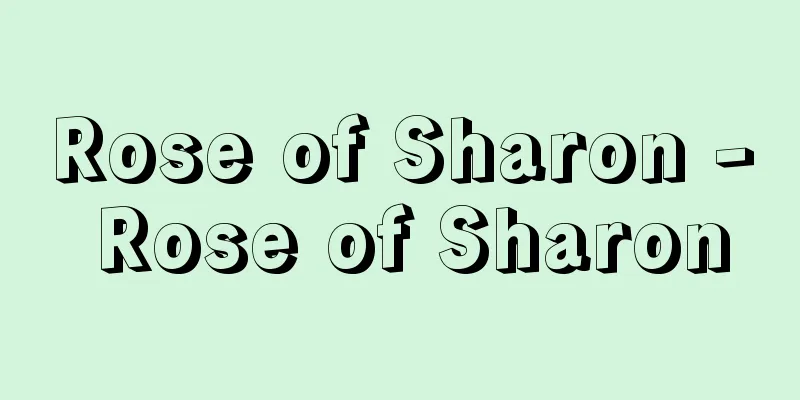Zeami

|
He was a Noh actor and Noh playwright in the Muromachi period. He was also an unparalleled theorist, director, and composer, and together with his father Kan'ami, he was a giant who added a new genre of theater to Japanese culture. He was the eldest son of Kan'ami, the founder of the Yuzaki troupe of Yamato Sarugaku, and his real name was Kanze Saburo Motokiyo. His childhood name was Oniyasha, and he was later given the name Fujiwaka by Nijō Yoshimoto. After his father's death (1384), he became the second Kanze Tayu. Later, he took the stage name Zeamidabutsu, handed over his Tayu position to his eldest son Motomasa, and took the Buddhist name Shio Zenpo after entering the Buddhist priesthood. In 1374 (Bunchu 3, Oan 7) at the age of 12, Zeami performed with his father at Imakumano in Kyoto, capturing the heart of Shogun Ashikaga Yoshimitsu, and thereafter, under his generous patronage and strict guidance, Zeami perfected Noh as an art. He was also greatly influenced by the aestheticism of the greatest cultural figure, Regent Nijō Yoshimoto, and Omi Sarugaku performer Inuodoami. In addition to Kannami's approach, which relied on the patronage and support of the masses, and the dramatic interest of his Noh, Zeami perfected highly advanced poetic dramas that appealed to the appreciation eyes of the aristocratic class. Zeami aimed to fuse the elements of the theatre and dance with musical elements, aiming for refined elegance and a sense of mysterious beauty. He established the three bodies as the basis of his acting technique: the "old body" which expresses elegance, the "female body" which is the crystallization of beauty itself, and the "military body" which expresses the excitement of movement, and perfected the five-stage playwriting method of jo-ha-kyu. Zeami's greatest achievement is the idea of the theater known today as "Mugen Noh." The appearance of ghosts, gods, and demons is rather a primitive form of performing arts, but Zeami took this into consideration and created an avant-garde theater that leaps through time and space, condensing life itself from the afterlife. Most of his works, except for Monogurai Noh, are written in the Mugen Noh style. There are nearly 50 pieces that are definitely Zeami's works, and if you add pieces that seem like Zeami, the number would double. The Kami-noh genre includes "Takasago," "Yumi-Yawata," "Yoro," "Oimatsu," "Hojogawa," "Aridooshi," and others; Shura-noh genre includes "Yashima," "Atsumori," "Kiyotsune," "Tadanori," "Sanemori," and "Yorimasa"; the female-themed Noh genre, which is now called the "third-class" genre, includes "Izutsu," "Higaki," and "Uneme"; the fourth-class genre includes the dreamlike Noh genres "Saigyo-zakura," "Funabashi," and "Nishikigi," and the dreamlike Noh genre includes "Mugen-noh." Similar to these are "Aoi no Ue," "Koino Omouni," and "Kinuta," as well as modern Noh plays such as "Sakuragawa," "Hanjo," "Minatsuki Barae," "Hanagatami," "Kashiwazaki," "Ashikari," "Kouya Monogurui," "Tsuchiguruma," and "Shun'ei." Fifth-class plays include the spirits of noblemen such as "Tooru" and "Suma Genji," and the female form "Taema," and demon Noh plays such as "Nue," "Nomori," "Ukai," and "Taisanpukun." Zeami also left behind many theories on art, and it is surprising that such advanced theories existed in 15th-century Japan. Many of these have been translated and highly acclaimed abroad. However, Zeami's writings, which had been kept secret within the Noh family, were discovered by academics in 1909 (Meiji 42). First introduced as "Zeami Jurokubushu" by Yoshida Togo, they were later introduced with new materials, and 21 writings are now available. Starting with "Fushikaden" (the "Kadensho" is a colloquial name), which describes the teachings of Kannami, and going through "Shikado" and "Kakyo," which are the essence of Zeami's theory, to "Shugyokutokuka" and "Kyakurai-ka," which he wrote in his later years, we can see the deepening of his thoughts, backed by his experiences on stage. The "flower" that is common to all the titles is a theory for sustaining the charm of the Noh stage, and it pursues an elegant ideal of beauty known as "yugen," leading to the artistic level of "ran'i," which is the sublimation of yugen. Other works he wrote include "Five Ranks," "Nine Ranks," and "Rikugi," which are essays on artistic ranks and styles that explain the system of yugen (mysticism); "Yugaku Shudo Fuuken," which is a theory on the art of practice; "Kashuu no Uchinukigaki," which is an excerpt from "Kakyo" on the theory of directing (Noh Jo Hakyu Koto); "Ningyo Zu," which illustrates the art forms; "Sando," a theory on playwriting (Noh Sakusho); and "Music Theory." These include "Ongaku Kowadashikuden," "Fushidsuke Shidai," "Fugyoku Shu," "Goon Kyokujoya," as well as "Goon," which is also an important resource for Noh composers, "Shudousho," which explains the leadership of the troupe and the responsibilities of each role, and "Sarugaku Dangi" (Sarugaku Dangi after the Heir's Sixty), a record of Zeami's discussions on the arts in his later years written by his second son, Motoyoshi. In addition, "Museki Isshi" is a eulogy mourning the death of his eldest son, Motomasa, who he had looked up to, and "Kintosho" is a plaintive, short song-style account of Zeami's feelings during his final years when he was exiled to Sado. Furthermore, the fact that Zeami has three handwritten treatises on Noh, nine Noh scripts (scripts), and two letters still extant makes them the oldest such examples in the history of Japanese literature, and their writing style, such as spaced writing, the use of voiced consonants (a type of consonant that was rarely used at the time), right-justified short consonants like today, a style of writing close to phonetic writing, and katakana and hiragana writing, are said to demonstrate Zeami's originality. While Kannami was a large man, Zeami was a small man, and documents have been discovered in recent years that show that he had a sense of rhythm in his movements. However, after Yoshimitsu's death in 1408, Zeami, who reigned over the world as an unparalleled master, lost the favor of the Shogunate to the rival performing art of Dengaku, and the sixth Shogun, Ashikaga Yoshinori, favored Zeami's nephew Onami, and Zeami's troupe was oppressed in every way. His second son, Motoyoshi, became a monk and gave up his art, and his eldest son, Motomasa, died in exile in Ise before turning 40. Zeami, lamenting the downfall of his troupe, was exiled to Sado at the age of 72. The reason is unknown. It is not known whether Zeami was pardoned after Yoshinori's assassination and took refuge with his son-in-law, Konparu Zenchiku, or even the location of his grave. Although the latter half of his life was unfortunate, it can be said that this adversity only fuelled his desire to pass on Noh to future generations, and in fact Zeami's Noh, its aesthetics, and his outstanding artistic theory continue to live on in the present day. [Masuda Shozo] "Complete Collection of Japanese Classical Literature, 40: Collection of Noh Plays, Vol. 1, annotated by Yokomichi Mario and Omote Akira (1960, Iwanami Shoten)" ▽ "Complete Collection of Japanese Classical Literature, 33 and 34: Collection of Noh Plays, annotated and translated by Koyama Hiroshi, Sato Kikuo, and Sato Kenichiro (1973, 75, Shogakukan)" ▽ "Complete Collection of Japanese Classical Literature, 65: Collection of Poems on Poetry, Collection of Noh Plays, annotated and translated by Hisamatsu Sen'ichi and Nishio Minoru (1961, Iwanami Shoten)" ▽ "Complete Collection of Japanese Classical Literature , 51: Collection of Renga (Renga), Collection of Noh Plays, Collection of Haiku (1973, Shogakukan)" ▽ "Complete Collection of Japanese Classical Literature, 51: Collection of Renga (Renga), Collection of Noh Plays, Collection of Haiku (Haiku)" annotated by Ijichi Tetsuo, Omote Akira, and Kuriyama Riichi (1973, Shogakukan)" ▽ "Shincho Collection of Japanese Classics, Collection of Zeami's Art, annotated by Tanaka Yutaka (1976, Shinchosha)" ▽ "Complete Collection of Japanese Thought, 24: Collection of Japanese Thought, edited by Omote Akira and Kato Shuichi (1974, Shogakukan )" "Zeami Zenchiku" (1974, Iwanami Shoten)" ▽ "Japanese Masterpieces 10: Zeami" edited by Masakazu Yamazaki (1969, Chuokoron-Shinsha)" ▽ "Kan'ami and Zeami" by Dosan Toida (Iwanami Shinsho)" ▽ "Zeami" by Tadahiko Kitagawa (Chuokoron-Shinsho)" [Reference items] | | | | | |The photo shows a copy believed to have been written by Kanze Mototada VII. Late Muromachi period. Owned by the National Diet Library . "Three Paths (written by Nosaku)" Source: Shogakukan Encyclopedia Nipponica About Encyclopedia Nipponica Information | Legend |
|
室町時代の能役者、能作者。また理論家、演出家、作曲家として比類ない存在で、父の観阿弥(かんあみ)とともに日本の文化のジャンルに新たに演劇を加えた巨人である。大和猿楽(やまとさるがく)の結崎(ゆうざき)座の創設者観阿弥の長男で、本名は観世三郎元清(かんぜさぶろうもときよ)。幼名は鬼夜叉(おにやしゃ)、やがて二条良基(よしもと)から藤若(ふじわか)の名を賜る。父の死(1384)後、2代観世大夫(たゆう)となる。のち、芸名を世阿弥陀仏(だぶつ)とし、大夫職を長男元雅(もとまさ)に譲って出家入道したあとの法名は至翁禅芳(しおうぜんぽう)。 1374年(文中3・応安7)、父とともに12歳で京都今熊野(いまくまの)で演能したおり、将軍足利義満(あしかがよしみつ)の心をとらえ、以後その惜しみない庇護(ひご)と厳しい指導のもとに能を芸術的に大成した。また、最高の文化人であった摂政(せっしょう)二条良基や、近江(おうみ)猿楽の犬王道阿弥(いぬおうどうあみ)の唯美主義の影響も大きい。大衆の愛顧と支持をよりどころにした観阿弥の行き方、その能の劇的興味に加え、世阿弥は貴族階級の鑑賞眼に訴える高度の詩劇を完成していく。 世阿弥は「舞歌二道」、つまり演劇的・舞踊的要素と、音楽的要素の融合を目標とし、上品な優雅さ、「幽玄」の美意識を目標とした。その演技術の基本を、気品の表現である「老体」、美そのものの結晶である「女体」、動きのおもしろさの「軍体」の「三体」とし、序破急五段の作劇法を完成した。世阿弥の功績の最大のものは、今日「夢幻能」とよばれる演劇の発想にある。亡霊や神や鬼の登場は、むしろ芸能の原始形態であるが、彼はそれを踏まえつつ、死後の世界から人生そのものを凝縮する、時間と空間を飛躍する前衛的な演劇を創造したのである。その作品群は、物狂い能を除くほとんどが、夢幻能のスタイルで書かれている。 世阿弥の作品として確実なものは50曲近く、世阿弥らしい曲を加えると倍の数になろう。神の能の類に『高砂(たかさご)』『弓八幡(ゆみやわた)』『養老』『老松(おいまつ)』『放生川(ほうじょうがわ)』『蟻通(ありどおし)』ほか、修羅(しゅら)の能に『八島(やしま)』『敦盛(あつもり)』『清経(きよつね)』『忠度(ただのり)』『実盛(さねもり)』『頼政(よりまさ)』など、今日三番目物とよばれる女体の能に『井筒(いづつ)』『檜垣(ひがき)』『采女(うねめ)』など、四番目物に夢幻能の『西行桜(さいぎょうざくら)』『船橋(ふなばし)』『錦木(にしきぎ)』、夢幻能に準ずる『葵上(あおいのうえ)』『恋重荷(こいのおもに)』『砧(きぬた)』、現在能の『桜川』『班女(はんじょ)』『水無月祓(みなつきばらえ)』『花筐(はながたみ)』『柏崎(かしわざき)』『芦刈(あしかり)』『高野物狂(こうやものぐるい)』『土車(つちぐるま)』『春栄(しゅんえい)』ほか、五番目物に貴公子の霊の『融(とおる)』『須磨源氏(すまげんじ)』、女体の『当麻(たえま)』、鬼の能に『鵺(ぬえ)』『野守(のもり)』『鵜飼(うかい)』『泰山府君(たいさんぷくん)』等々。 世阿弥はまた多くの芸術論を残したが、15世紀の日本にこのような高度な芸術論が存在したことは驚くべきことであり、外国でも多く翻訳されて評価が高い。ところが、能の家に深く秘せられてきた世阿弥の伝書が、学会に発見されたのは1909年(明治42)のことであった。まず吉田東伍(とうご)によって『世阿弥十六部集』として紹介されたが、その後新資料の発見もあり、現在21の伝書が世に出ている。観阿弥の教えを祖述した『風姿花伝(ふうしかでん)』(花伝書は俗称)を出発点に、世阿弥理論の真髄である『至花道(しかどう)』『花鏡(かきょう)』を経て晩年の『拾玉得花(しゅうぎょくとくか)』『却来華(きゃくらいか)』まで、舞台の体験に裏づけられた思索の深まりをみることができる。その題名に共通する「花」は、能の舞台上の魅力を持続させるための理論であり、「幽玄」とよばれる優雅な理想美が追求され、さらには幽玄を止揚した無心の芸位「闌位(らんい)」に至っている。 そのほか、幽玄の体系を説く芸位・芸風論に『五位』『九位(きゅうい)』『六儀(りくぎ)』、習道論の『遊楽習道風見(ゆうがくしゅどうふうけん)』、『花鏡』から演出論を抜き出した『花習内抜書(かしゅうのうちぬきがき)』(能序破急事(のうにじょはきゅうのこと))、芸態を図示した『二曲三体人形(にんぎょう)図』、作劇論の『三道(さんどう)』(能作書(のうさくしょ))、音曲論に『音曲口伝』(音曲声出口伝(おんぎょくこわだしくでん))『曲付次第(ふしづけしだい)』『風曲集(ふうぎょくしゅう)』『五音(ごおん)曲条々』、ならびに能の作者の資料としても重要な『五音』、座の統率、各役の職責を説いた『習道書(しゅどうしょ)』、世阿弥の晩年の芸談を次男の元能(もとよし)が筆録した『申楽談儀(さるがくだんぎ)』(世子(ぜし)六十以後申楽談儀)がある。そのほか、『夢跡一紙(むせきいっし)』は嘱望していた長男の元雅の死を悲しむ追悼文であり、『金島書(きんとうしょ)』は最晩年の佐渡配流の心境を淡々と小謡(こうたい)風につづる。 なお世阿弥自筆の能楽論3種、能本(脚本)9種、書状2種が現存していることは、日本文芸史上最古の例とされ、またその表記法が、分かち書き、当時用例の少ない濁点の使用、現在のような促音の右寄せ、表音式に近い書き方、片仮名、平仮名表記など、世阿弥の独創性を示すものとされる。 観阿弥は大男であったが、世阿弥は小男であり、その起居動作にリズム感があったという資料が近年発見された。しかし、比類ない名人として世に君臨した世阿弥も、義満の死(1408)後は、ライバル芸能である田楽(でんがく)に将軍家の寵(ちょう)を奪われ、6代将軍足利義教(よしのり)は世阿弥の甥(おい)の音阿弥(おんあみ)をひいきし、世阿弥一座は事ごとに弾圧されるようになる。次男元能は出家して芸を捨て、長男元雅は40歳に満たず伊勢(いせ)に客死する。一座破滅と嘆く世阿弥は、さらに72歳の身を佐渡に流される。理由は不明である。義教暗殺後、許されて娘婿の金春禅竹(こんぱるぜんちく)のもとに身を寄せたかどうか、その墓のありかもまったくわからない。不幸な後半生であったが、その逆境がかえって後世に能を伝えようとする意欲をかきたてたともいえるし、事実、世阿弥の能とその美学、卓越した芸術理論は、現代に生き続けているのである。 [増田正造] 『横道萬里雄・表章校注『日本古典文学大系 40 謡曲集 上』(1960・岩波書店)』▽『小山弘志・佐藤喜久雄・佐藤健一郎校注・訳『日本古典文学全集 33・34 謡曲集1・2』(1973、75・小学館)』▽『久松潜一・西尾実校注『日本古典文学大系 65 歌論集 能楽論集』(1961・岩波書店)』▽『伊地知鐵男・表章・栗山理一校注・訳『日本古典文学全集 51 連歌論集・能楽論集・俳論集』(1973・小学館)』▽『田中裕校注『新潮日本古典集成 世阿弥芸術論集』(1976・新潮社)』▽『表章・加藤周一編『日本思想大系 24 世阿弥 禅竹』(1974・岩波書店)』▽『山崎正和編『日本の名著 10 世阿弥』(1969・中央公論社)』▽『戸井田道三著『観阿弥と世阿弥』(岩波新書)』▽『北川忠彦著『世阿弥』(中公新書)』 [参照項目] | | | | | |写真は、7世観世元忠が書写したと推定される写本。室町末期国立国会図書館所蔵"> 『三道(能作書)』 出典 小学館 日本大百科全書(ニッポニカ)日本大百科全書(ニッポニカ)について 情報 | 凡例 |
Recommend
Rewinding
…(1) Rewinding is the process of winding raw silk...
"Joy of Hope"
…Poet from Scotland. His couplet didactic poem, T...
Lijiang (English spelling)
Also called Ji River, it flows through the northea...
Shigenari Kimura - Shigenari Kimura
A military commander in the Azuchi-Momoyama perio...
Gadsden Purchase
The United States purchased territory from Mexico....
Musashi Seven Party
Small and medium-sized samurai groups were distri...
Sujiyu [Hot Spring] - Sujiyu
A hot spring located in the upper reaches of the K...
I am a cat - I am a cat
This is Natsume Soseki's first full-length no...
Army Pamphlet Incident - Rikugun Pamphlet Incident
In October 1934, the Army Ministry's Press Sec...
decorative art
...One reason is that from the mid-19th century, ...
Long-legged fly
A general term for insects belonging to the family...
Anchusa capensis - Anchusa capensis
...When it blooms in flower beds in early summer,...
Juraku - Juraku
A Buddhist term referring to the ten joys one can ...
gibbsite
...Three crystal forms are known: (1) Gibbsite α-...
Cotton Belt
A belt-like region in the southern United States w...









